In the last two blog entries about castles and fortresses, we’ve had a closer look at the general position of a castle and a look at the influence of a castle owner to the overall look and its general purpose. In this section, we want to consider more the point of worldbuilding, especially once it’s being abandoned and sort of handed over back to nature and other inhabitants. Therefore, this entry has the subtitle
Life as a ruin

Overall I want to take a dive into some real-world examples of castles and fortresses that have lost their purpose over time and what could be done over time. Our first example leads us to the famous German castle of Hambach, near the beautiful city of Neustadt an der Weinstraße. Originally built in the 11th Century, it became a residency for local bishops until it eventually burned down in the middle of the 16th Century. Since then, only partial restoration took place for the next centuries and it more and more lost its importance to be rebuilt. Then, in 1832, the ruins of Hambach Castle became a birthplace for the German unification movement in the 19th Century that eventually led to the unification of Germany in 1872 after the French-German war.
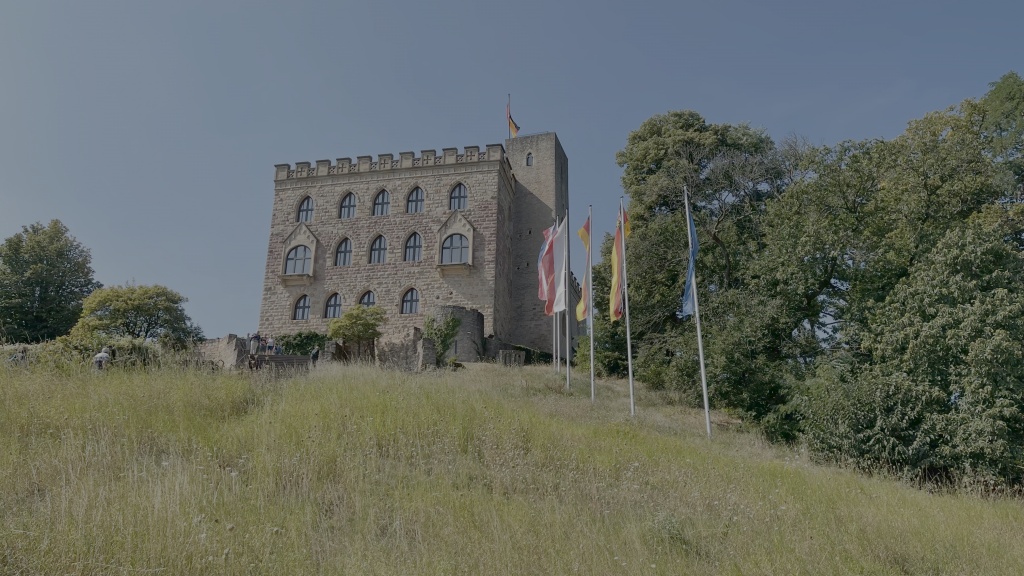
During Napoleon’s rule, large areas in Germany gained personal rights and freedoms never known at that point for most people at that point in history. Once Napoleon was dethroned however, these areas fell back to Prussia and Bavaria who rolled back some of the personal liberties and rights. Furthermore, events like the Belgium Revolution, the July Revolution in France in 1830 and the failed November Revolution in 1831 in Poland led to critical ideas brewing up inside large parts of Germany. Especially journalists and intellectuals were trying to publish more liberal think pieces, which led to some pushback from the state governments. Since demonstrations were prohibited at that point in history, the idea of a fair or festival came up. Several local groups (as well as Polish emigrants) organized a festival upon the ruins of Hambach Castle which led to a large group of around 20-30k participants who then marched towards it. Then, several speakers held speeches about freedom, liberty and demanded an abolishment of the splintered separation of German counties, all of them with different sets of rights and laws. Eventually, it took several decades until the movement manifested in the creation of Germany in 1871, though the resulting construct was a far cry from what the people at Hambach intended it to be. Furthermore, Hambach Festival marked also the first appearance of a black-red-gold flag that was waved during the festivities, which eventually became the colors of the Weimar Republic and eventually Germany after 1945.
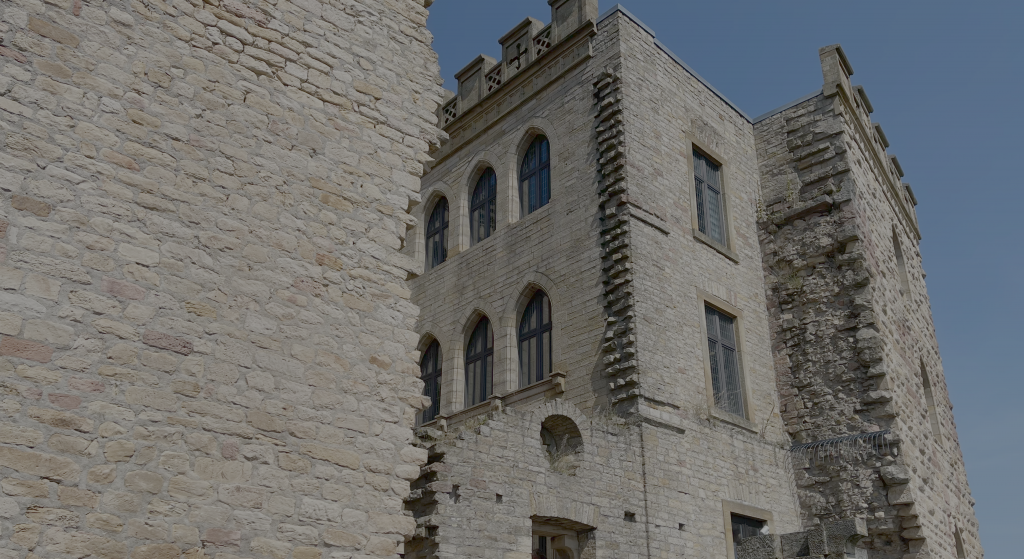
So. Lots of history lessons here, but how could this help for your castle?
Ownership of a ruin. Technically a castle in ruins is either without ownership or the owners don’t have any intention to rebuild it. In anyway, the most prominent inhabitants are:
- Nature, since it will easily be reclaimed by it, once it’s been abandoned after some time.
- Local people, who might use the rubble of the ruins of the castle to build houses in towns nearby from the stones.
- Local people, who might rent out parts of the building, use it for other means (e.g. Goethe wanted to use the Wartburg as a museum at some point) and wanting to turn it as a place for pilgrimage.
- Other groups like gangs, criminals, homeless people or people who need immediate shelter during hardship or use it as meeting places or place to hide objects.
- Festivities like public gatherings or concerts. Lots of castles have dedicated areas where stage plays or concerts may take place (e.g. Castle Klempenow hosts an annual music festival).
- Other forms of presentation like celebratory illumination in Heidelberg turns the castle ruins into a beacon of light, bringing it to life once more.
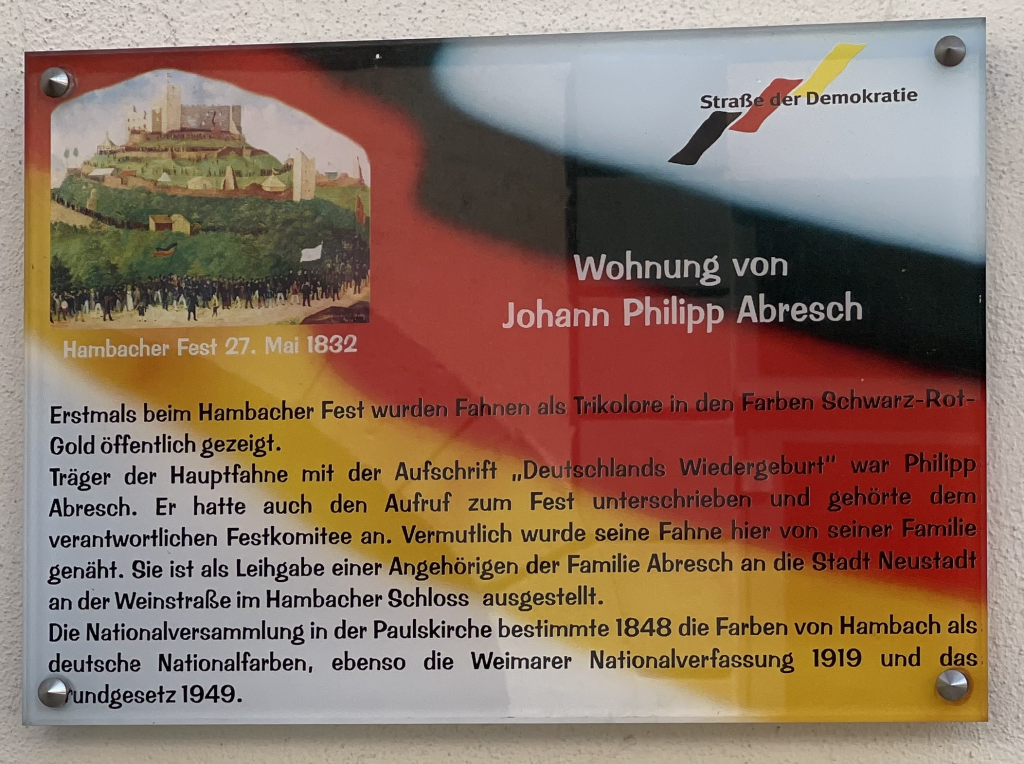
Lore outside the ruin. In terms of TTRPG worldbuilding, the castle ruins could turn to be a place full with monsters since the castle was not defended once they appeared. A town nearby could be located made from the stones of the ruins. The castle could be home to an inn with an amazing view over the surrounding areas. Or, naturally, a bandit group has claimed it for their nefarious purposes. Or, as in this example for Hambach Castle, it could have been a gathering place for people gearing up for a revolution. If it’s an event in the past, maybe consider placing NPCs throughout the area that have attended the event at the ruins who could tell you more about their history, their intentions and what eventually went on once they gathered at this place.
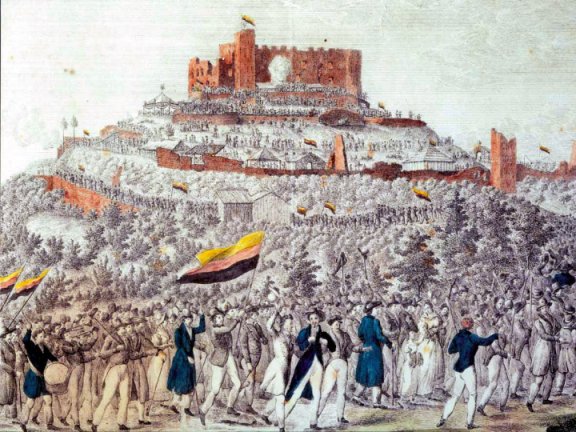
Life as an icon. In some cases, ruins have been an inspiration to many artists, philosophers and others. For example, Heidelberg Castle was frequently visited by Johann Wolfgang von Goethe, Victor Hugo, Mark Twain, or Empress Elisabeth of Austria. As a result, they described it in their travel books, journals and other publications. Many artists also made drawings of the surrounding shape of the ruins.
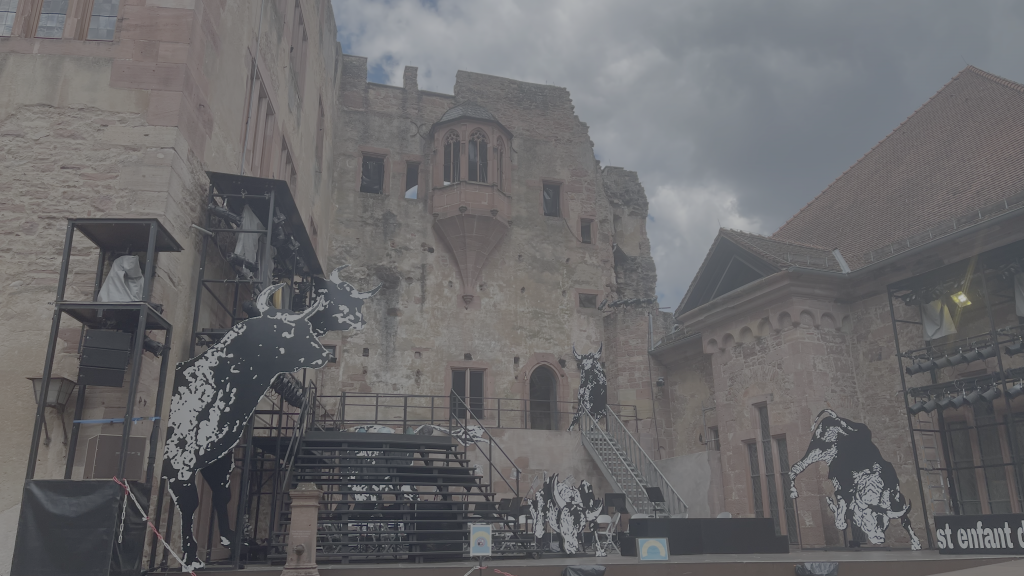
Destruction level. Furthermore, think about the destruction of the buildings of the castle. In case of Heidelberg Castle, most of the front-facing parts of the buildings have remained intact until today, whereas parts of the inner structure have been completely destroyed. Other fortified parts of the castle have been destroyed with planned detonations (see Thick Tower in the last entry). Castle Homburg was also destroyed completely in a similar way. For Castle Nanstein, most of the inner parts of the castle have been destroyed as well, however parts of its structure can still be recognized when compared to contemporary paintings. In general, try to think about the original structure of the castle and then successively try to chip away parts of it, bit by bit.

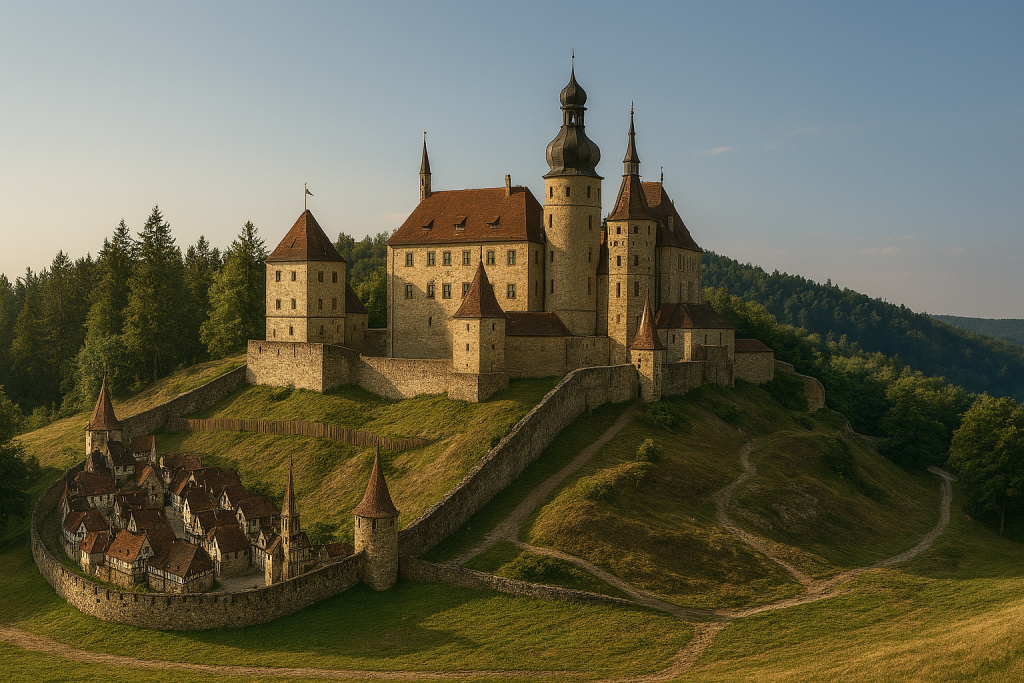
Enriching castles and fortresses in TTRPG. In general, don’t just fill up information about previous events within the confines of a location at specific locations, rooms or objects, try to distribute the information amongst the region. For example, Icespire Hold in Dragon of Icespire Peak has a rich backstory about a warlord using this castle as a last place of defense against incoming hords of orcs. Since Phandalin is the closest town to this castle, some of the inhabitants or their ancestors could have some passing knowledge about what could be there, even though it seems to be forgotten by history. Think about why it was forgotten, who might know about it and what could have happened in these times since the orc conquered the Hold and left it some time later. Try to give your lore some meaning and don’t just have it for flavor.

How a castle is turned into a ruin
I also wanted to include a few more examples about how and why castles have been abandoned in the first place.
- Destroyed after Sieges: Castle Nanstein near Landstuhl, Germany was owned by Franz von Sickingen, a Protestant reformer who tried to occupy Trier in order to secularize the city and the surrounding region. Since this did not work out, he fled back to Castle Nanstein until a large siege from incoming troups from Trier, Hessen and Pfalz attacked the castle, leaving it in rubbles, and Franz von Sickingen mortally wounded. It was partially restored until late 17th Century after the French left the area.
- Destroyed after Retreats: As mentioned above and in the previous articles, the French under Louis XIV had occupied large areas between France and parts of the lands on the left side of the Rhine during the beginning of the Nine Years War (1688-1697). After a swift campaign, the French troops made large progressions even beyond the Rhine. After realizing that occupying this vast territory would be quite complex, Louis XIV and his generals decided on a scorched earth policy, retreating back to the West and destroying all towns, cities and castles in that area. This led to the destruction of Heidelberg and Heidelberg Castle, Homburg Castle, Castle Nanstein as well as Speyer, Mannheim or Kaiserslautern and many other places.
- Destroyed after natural desasters. Some of the remaining parts of Heidelberg Castle were destroyed after a fire broke out after a thunder struck. Castello di Bifar in Sicily, Italy was destroyed after a large earthquake in 1693. More recently, the 2023 earthquake in Turkey led to large destructions of Gaziantep Castle in Gaziantep, Turkey. You might also consider destructions caused by flooding, tsunamis (if close to the sea), landslides, volcanic activities and the like.
- Partial destruction after peace treaties. Several fortifications around the German-French border or in Luxembourg had been destroyed as a sign of peaceful transition. More on that in a future entry.
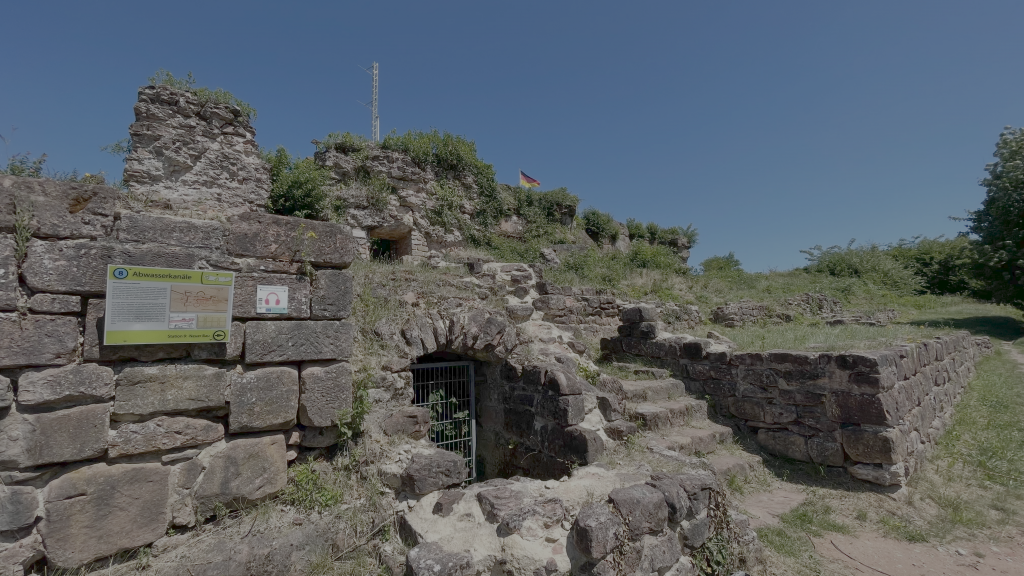
This concludes this third entry of the Castles and Fortresses in TTRPGs series. I’m currently still figuring out some of the future topics, though the most likely ones could be about cities as fortresses, lost places in general and inhabitants of castles and fortresses. I hope I’ve given you some more ideas for your future castle designs.
tl;dr
- Why is a castle now in ruins?
Think about the inciting incident that brought down a kingdom or made castle owners abandon their castles. - How has the castle being destroyed and how much remained?
A castle might be brought down by sieges, retreats or natural desasters. Or what other reasons could I have missed here? - Who might take ownership of the ruins once no one wants to claim it?
There might be several groups who might use the ruins for their purposes. Gangs and criminals might use them as hiding places. Local people might use if for cultural or political purposes or to gather stones to build their houses. Tourists might visit this place and use it as inspiration for their art. - Who is affected by the destruction of the castle and how does its history spread around?
Have NPCs in the local area know about its past and describe their point of view or what they have been told by ancestors living or working at the castle. Don’t just keep the castle’s lore located within the confines of the castle. Distribute it among the surroundings. - What could be done with the castle ruins?
Local people could use it as a gathering place for festivals and festivities. Think about what kind of purpose those gatherings could have within the lore of your story.
